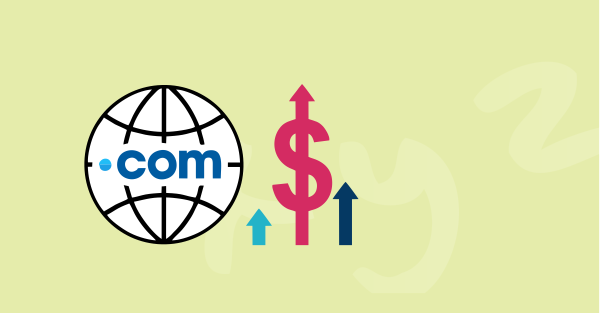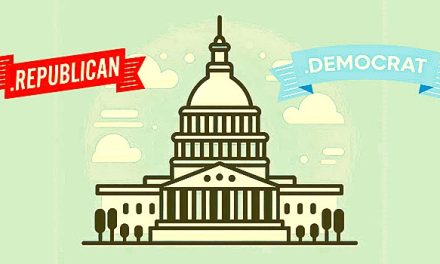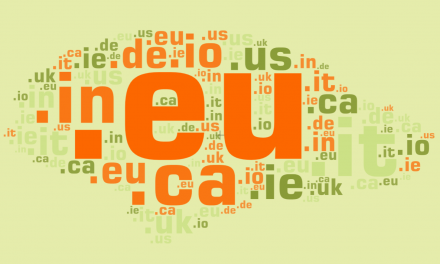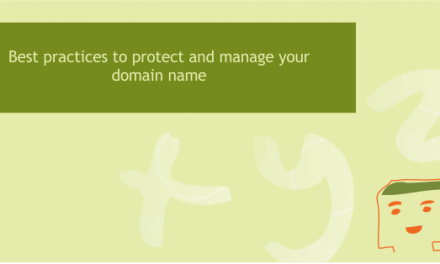As the first popular domain name to hit the internet more than 30 years ago, .COM is still the default first choice for many registrants with a market share of over 40%. Along with the other domain “veterans” such as .NET, .ORG and INFO, etc. it is regarded as a legacy TLD in view of the new wave of domain extensions that debuted the market in recent years. All legacy domains are supervised by ICANN which is expected to be a coordination body regarding policies and pricing. The registries that manage legacy TLDs are registry operators which are bound by ICANN to guard the public interest via special agreements.
The organizations that manage legacy TLDs are registry operators which are bound by ICANN to guard the public interest via special agreements. All legacy TLDs are supervised by ICANN which is expected to be a coordination body regarding policies and pricing.
After a year of negotiation, ICANN agreed to incorporate that change into its Registry Agreement with Verisign. This follows a response to a lawsuit brought by Verisign 2006, where ICANN granted Verisign the .com registry management contract with a presumptive right of renewal and without a competitive bidding process. Initially, those agreements had annual price increase regulations and price caps baked in to prevent registries from going overboard with domain pricing policies.
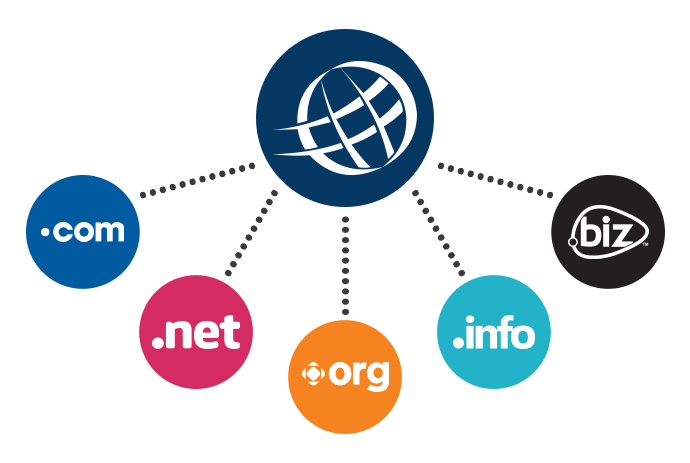
Over the years, various contract amendments have been made to scale up the annual price increase rates for the legacy TLDs. All that came to a head last year when ICANN lifted all price controls on .ORG and .INFO extensions. At that time, .COM remained the only legacy domain extension that was immune to price hikes thanks to a contracted price freeze in 2012, but Verisign managed to persuade the Trump administration in 2018 to allow it to return to the previous domain policy of being able to raise prices by 7% in four out of the contract’s six years.
Following a year of negotiations, ICANN is close to incorporating the price increases into its agreement with Verisign. This means it is approving a series of price hikes over most of the next decade, starting this year. According to the new contract terms, Verisign will be able to raise the .COM price by up to 7% annually in 4 years out of the 6-year contract cycle.
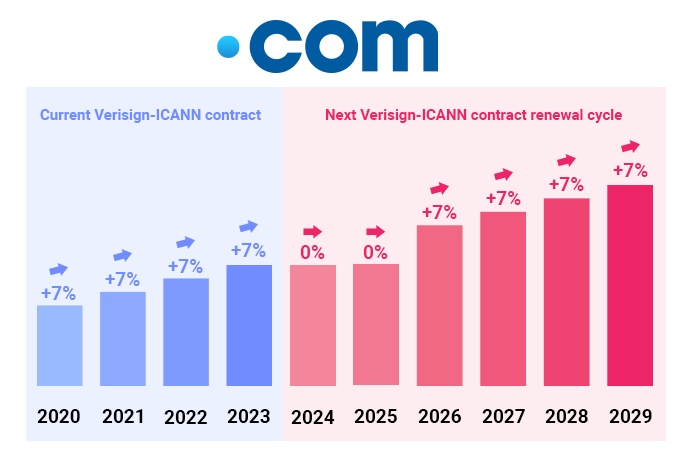
Thus, .COM prices could go up by a staggering 70% over the next 10 years.
It’s not just the price hike that is concerning
ICANN’s public comment period on the .COM contract change closed last Friday with tens of thousands of negative comments left by various registrants and organizations. The largest concerns are regarding the lack of transparency and lucidity in the Verisign deal. ICANN is has a reputation for being a non-profit organization which oversees the stability and integrity of the backbone of the Internet. In the past they have always been known to seek input from the community regarding policy developments and important implementations.
Questions are being asked as to why the community has not been put out to a discussion before the negotiation with Verisign took place. Even more alarming, Verisign is going to pay ICANN $20 million over a period of 5 years as part of this new arrangement.
This price hike with .COM domains would see a massive increase in revenues for Verisign, with no explicit explanation as to how the funds will be used to the public benefit by the non-profit entity. With these newly agreed terms, the community is left fearing that Verisign has been given the powers to grow a monopoly in an environment where innovation and competition will be under question.
Therefor contradicting ICANN’s core principles of integrity and fair play in which it strives to maintain.
It appears as though the recent changes to legacy TLD regulations including price cap removal and price increase are a sign of ICANN desire to unify the rules for legacy domains and new domains. It is as if “legacy” registries have become increasingly emphatic on requesting price control removal in view of the recent expansion of the domain name system and the pricing freedom delegated to new gTLD registries. With new domain names (.XYZ, .APP, .DENTIST etc), ICANN allowed new TLD registries to increase domain registration prices at their will from the beginning.
However, not all TLDs are created equal. Currently, there are millions of legacy TLD holders who registered their .COM, .ORG or .INFO etc. domains with strict price regulation policies in place. Technically speaking, technology gets cheaper in scale and the number of .COM registrations keeps increasing each year despite the growing competition of new domain name extensions.
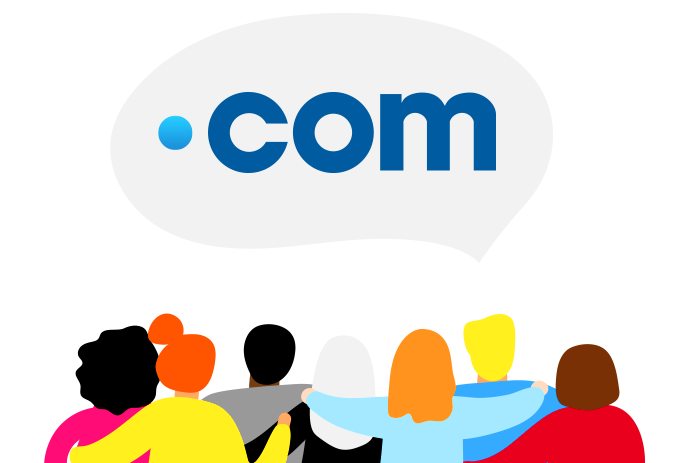
It appears like recent events have questioned the very rules designed to keep the domain name system fair and relatively affordable. The industry and domain name registrants alike are left wondering will the domain name system keep being run primarily to the public benefit, as a wide-open space with competition and innovation principles in place? Or, will it soon be dominated by the for-profit interests of a few huge companies in a purely commercial environment at the expense of public good and transparency.
Judging by the thousands of opinions posted within the public comment period, the vision of the DNS remaining an open space, mindful of the public good is clearly under threat.
Let’s hope ICANN takes public opinion into account this time unlike with the previous .ORG sale consultation when more than 3000 comments were ignored as being ‘spam’.
Help stop the price increase of .com!
Show your support by signing the https://t.co/8FUrnGFo7i petition.https://t.co/RJufbhb33f #stopthepriceincreaseofcom pic.twitter.com/FJxEGd3dsO
— Thexyz (@thexyz) February 26, 2020

